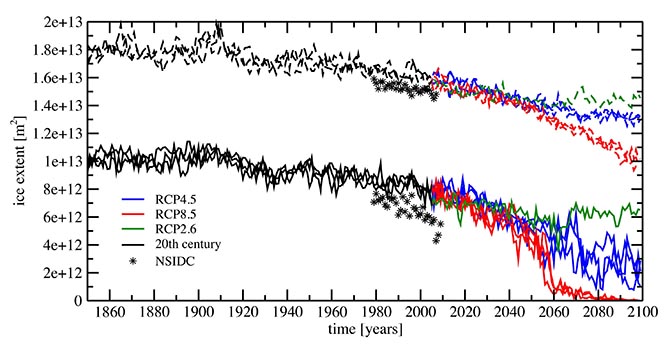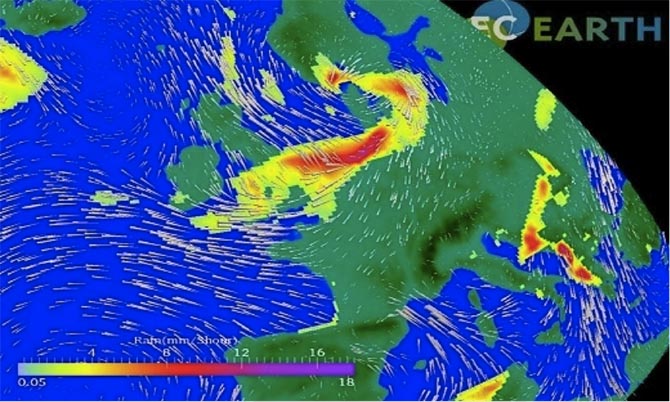Tracking climate change
Researchers from Stockholm University and the Swedish Meteorological and Hydrological Institute have been performing simulations of the Earth's climate to help us make better long-term planning decisions about climate-related issues.
by Gunilla Svensson, Rodrigo Caballero and Laurent Brodeau,
Department of Meteorology (MISU), Stockholm University,
and
Torben Königk and Klaus Wyser,
Swedish Meteorological and Hydrological Institute (SMHI)
With scientists currently arguing over whether recent changes in the Antarctic ice presage a rise of nearly five metres in the sea level over the next two centuries (which would submerge large parts of the inhabited world), we are all well aware of the importance of predicting changes in the climate in time to take remedial steps.

Researchers Gunilla Svensson, Rodrigo Caballero and Laurent Brodeau, from the Department of Meteorology at Stockholm University (MISU), along with their colleagues, Torben Königk and Klaus Wyser from the Swedish Meteorological and Hydrological Institute (SMHI), are working to improve our understanding of climate change and thus enable us to make better-informed decisions on future policies (for example, in relation to limiting carbon emissions). They have performed a large ensemble of historical and future climate simulations using the state-of-the-art climate model EC-Earth as part of the Coupled Model Intercomparison Project Stage 5 ( CMIP5 ), which is being coordinated by the World Climate Research Programme. In this exercise, current-generation climate models from institutions around the world are run under a standardised protocol to permit intercomparison of the results under uniform conditions. The model output is stored and made publicly available through the Earth System Grid, a distributed data storage system. They have also been active in the scientific analysis and interpretation of the CMIP5 climate simulations. Much of their climate model simulation work has been performed on PDC’s supercomputer resources.

This important climate modelling work has been taken into consideration in the Fifth Assessment Report (AR5) of the Intergovernmental Panel on Climate Change (IPCC), which is a summary of current knowledge in climate science that will be used by global decision makers. This report is a key vehicle for the transmission of climate information to society.